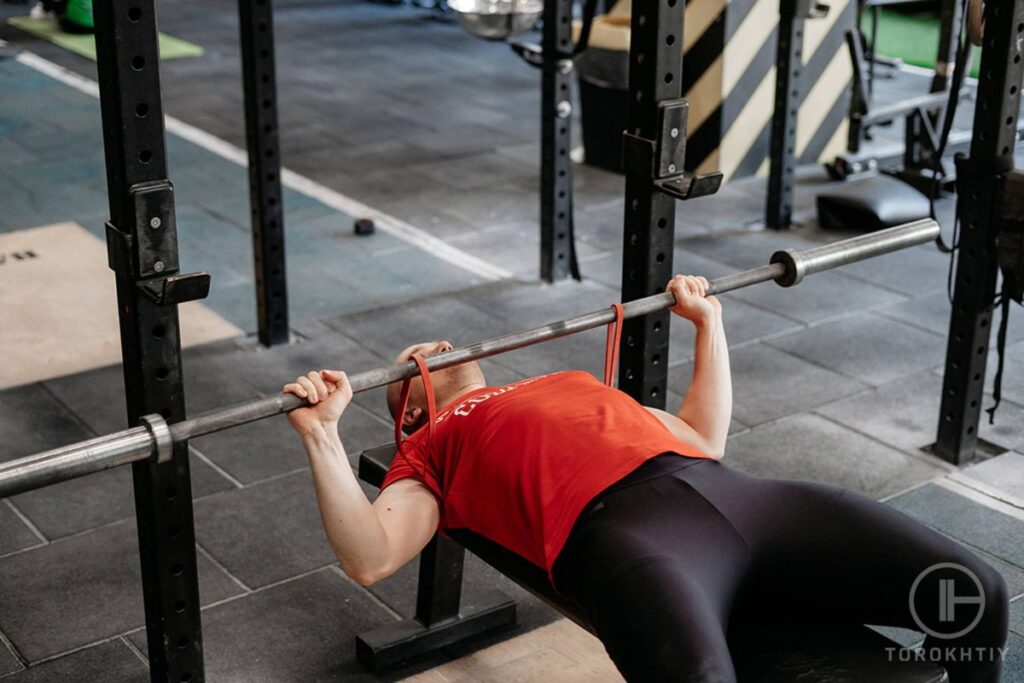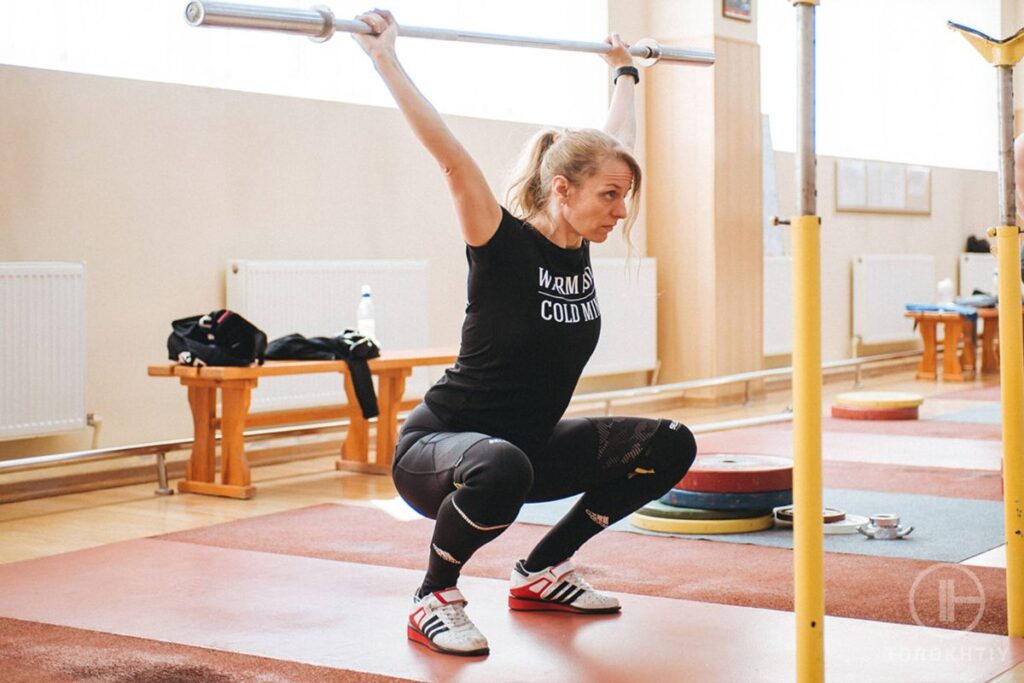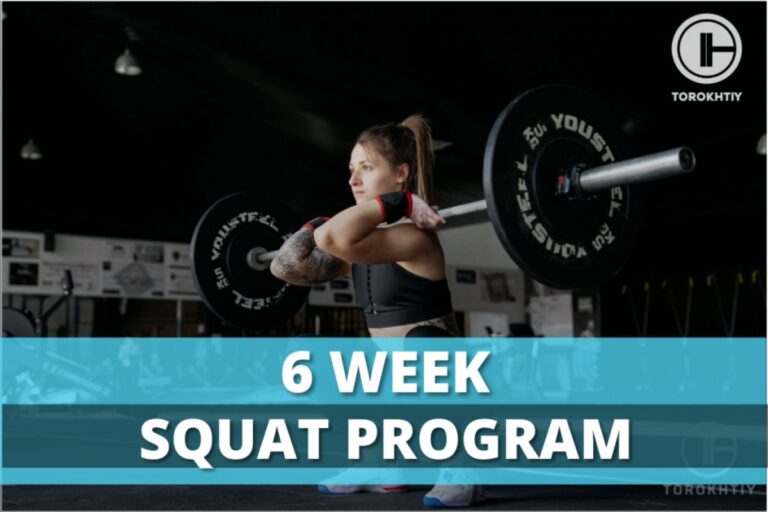What Is A Deload Week In Weightlifting: The Science of Smart Recovery
We are constantly looking for ways and tips on how to increase performance and how to build better results in weightlifting due to intensification of training programs. But today we will touch another side of programming and will dive into a topic: “what is a deload week in lifting?” Learn more about this important part of programming in this article.
What is a deload week in weightlifting? Here is the answer. It is a global load reduction in the whole week, up to 40-50% or even more. The goal is to avoid overtraining, plateaus and to allow the body to recover after regular stressful workouts.

What Is A Deload Week?
It is a planned period за recovery, during which intensity (working weight) and volume (amount sets and reps) significantly reduced. So basically during deload week, you night lifter lighter weights, do fewer lifts and/or take more rest days.
The main goal of deload week is to allow the athlete’s body to recover from the physical stress of intense loads. The question is, when an athlete performs a big volume of heavy lifts he produces micro-tears in his muscles. During rest days he gives the opportunity to his muscles to repair and to become bigger and stronger. But need to remember that continuous intensive training without adequate rest can lead to plateau in progress, increase risk of injury, lead to psychological burnout and overtraining.
A deload week routine is needed for several reasons:
Physical recovery. It allows your body to heal and recover from the micro tears and inflammation caused by intense weightlifting.
Mental recovery. It provides a mental break from the rigors of intense training helping to prevent burnout.
Performance improvement. By allowing your body to fully recover you can return to train with renewed energy and strength, ultimately helping to improve your performance.
Anyone who is engaged in regular intense strength training can benefit from a deload week, however it is particularly important for advanced athletes, who are lifting very heavy weights and doing high volume training. Beginners may not need a deload week as frequently, because they are not lifting as heavy and their bodies can recover more quickly.

Benefits Of The Deload Week
Deload weeks are essential for anyone engaged in regular weightlifting.
Here are some key benefits:
✅ Prevents Overtraining
Continuously training at high intensity without adequate rest can lead to overtraining syndrome, a condition characterized by a decline in performance, increased risk of injury and other negative health effects. A deload week helps prevent overtraining by providing a period of planned recovery.
✅ Reduces Risk of Injury
Consistent heavy lifting puts a lot of stress on your muscles, joints and connective tissues. A deload cycle reduces the load on these structures, helping to prevent injuries like strains, sprains and tendonitis.
✅ Enhances Mental Recovery
Intense training can be mentally exhausting. a deaload the week provides a psychological break, helping to prevent burnout and mental fatigue. This can be particularly important for maintaining long-term motivation.
✅ Facilitates Adaptation
A deload week allows the body to adapt to the stress imposed by training. This is essential for making progress, as it enables the body to handle greater loads and work overtime.
✅ Hormones Level Optimization
Intense training can lead to imbalances in hormones such as cortisol (a stress hormone) and testosterone (an anabolic hormone). A deload week helps to rebalance these hormones, promoting a healthier hormonal environment for muscle growth and recovery.
Intense training can lead to imbalances in her hormones such as cortisol (stress hormone), somatotropin (growth hormone) and testosterone (anabolic hormone) A deload helps to re-balance these hormones, promoting a healthier hormonal environment.
✅ Restores Glycogen Depot
Intense loads depletes glycogen stores in your muscles. A deload week allows this depot to be replenished providing the energy needed for a future work out.

Signs That You Need A Deload Week
Identifying when you need a deload week is crucial for maximizing your training progress while minimizing the risk of overtraining and injury. Here are some signs that you might need a deload week:
Identifying when you need a rest and a deload is crucial for maximizing your progress while minimizing the risk overtraining. Here are some signs that you might need a break from high intensity training.
1. Plateau in Performance
If you find that you are no longer making progress despite consistent training it might be a sign that your body needs a break to fully recover and adapt.
2. Strength or Endurance Decrease
If you find that you are suffering from lifting lighter weights, performing fewer reps or experiencing decreased endurance during your workouts, it could be a sign that you need a deload week.
3. Increased Muscle Pain or Soreness
While some muscle soreness is normal after training. If you find that you are experiencing increased soreness or pain that doesn’t improve with the 72 hours of rest, it might be a sign that you need a deload week as well.
4. Lack of Motivation
An enthusiasm and motivation decrease for training can be a sign of mental fatigue and a need for break and deload week workout.
5. Sleep Problems and Appetite
A loss of appetite, poor sleep quality or difficulty falling asleep or waking up can be signs of overtraining and need for a longer recovery period.
6. Increased Heart Rate And Frequent Illness
An elevated resting heart rate can be a sign of overtraining. Also, if you find that you are getting sick more frequently, it could be a sign that your immune system is compromised, due to chronic tiredness and I need a deload.
Keep in mind that deload week is not a weakness or laziness. It is a crucial part of a smart and well-structured training program. If you are experiencing any of the signs it might be a time to schedule a recovery week. Listen to your body and prioritize recovery to maximize your long-term success.

How To Do A Deload Week?
A deload week is a crucial part of a well structured program. Here are some tips on how to do a deload week and properly plan it:
1. Reduce Volume And Intensity
Reduce the weight you are lifting by 40-60%. For example, if you are lifting 200 pounds, reduce it to 80-120 pounds during your deload cycle. Also, reduce the number of sets and reps to perform. For example if you are doing protocol 5 sets x 5 reps, reduce it to 2-3 sets of 3-5 reps.
2. Increase Brake Intervals
Increase the rest intervals between sets and exercises. For example, if you are usually resting for 1 minute between sets, increase it to 2-3 minutes during your deload week.
3. Alternate Exercise Variations
Change the exercises you are using. For example, if you are doing back squats switch to front squats or leg presses during your deload the week. This provides a different stimulus to your body and can help promote more active recovery.
4. Incorporate Active Recovery
Include light cardio exercises, mobility and stretching drills during your recovery week. This will promote blood flow, improve flexibility and speed up the recovery processes.
Remember, the purpose of a deload week is to promote recovery and prevent overtraining. It is not a week off from training, but rather a week of lighter, more restorative training. Be mindful of how your body feels and adjust your training accordingly.
Keep in mind, the aim of deload week is to promote recovery and prevent overtraining. It is not a week off from training, but rather a week of lighter more restorative workouts. Be mindful of how your body feels and adjust your training accordingly.

Sample Deload Week In Weightlifting
A deload week example in basic strength training training can look like this:
Here is only the main load. Complete warmup and cool down even in deload workout is always mandatory.
- Session 1:
Squats variation: 2 sets of 4-5 reps at 50% of your 1RM
Romanian Deadlift 2 sets of 5-6 reps at 50% of your 1RM
- Session 2:
DB Bench Press: 2 sets of 6 repetitions at 40% of your 1RM
Bent Over Rows: 2 sets of 6-8 repetitions at 50% of your 1RM
- Session 3:
Light Cardio Training: 20-30 minutes of jogging, rowing, cycling, swimming with HR below 65%
- Session 4:
Overhead Press Variation: 2 sets of 4-6 reps at 50% of your 1RM
Pull-Ups: 2-3 sets of 5-6 reps (use assistance rubber band, if necessary)
- Session 5:
30 minutes of total body mobility and stretching
Leave 2 more days of this week for light activity, such as walking or take a complete rest.
In this example the intensity and volume of the exercises are significantly reduced, compared to a typical training week. The prescribed weights and deload week percentages are 40-50% of 1 RM, and only 2-3 sets of 4-8 reps prescribed for each exercise. This load reduction helps to promote recovery, while still providing a light stimulus to maintain muscle mass and strength. Additionally incorporating light aerobic exercise, mobility work and stretching helps to improve circulation and flexibility and overall well-being.

How Often Should You Do A Deload Week In Weightlifting?
The frequency of deload week can vary based on several factors, including lifting experience, the intensity and volume of training program and individual recovery capacity. However a general guideline how often should you do a deload week is 4-8 weeks of intense training.
From a physiological perspective, after every intense workout, athletes create microtears in muscle fibers, cause stress to the nervous system and deplete glycogen stores in muscles. Body repairs this microtears, replenish glycogen and adapt to stress during periods of rest and recovery, ultimately leading to increases in muscle strength and size
However, endless intense training without adequate recovery can lead to a state of overtraining and overreaching, where the body is not able to fully recover and adapt. This can result in plateau in performance, increased risk of injury and other negative health effects, such as hormonal imbalances and a weakened immune system.
In this case, a deload week provides a period of planned recovery where the load significantly reduces. This allows the body to recover from accumulated stress, repair muscles and rebalance hormones. Additionally, recovery week can help to prevent mental burnout and maintain motivation and enthusiasm for lifting.
It is important to note that the need for a deload training can vary from person to person. Some individuals, particularly those with a higher training age or those lifting very heavy weights, may require more frequent deload weeks, while beginners or those training at a lower intensity may require them less frequently. Additionally, other factors such as sleep, nutrition, stress levels, and overall lifestyle can impact your recovery capacity and the need for a deload week.
🔻FREE OLYMPIC WEIGHTLIFTING PROGRAM
Get started on your weightlifting journey with the Torokhtiy Free Olympic Weightlifting Program! Perfect for beginners, this FREE 2-week program focuses on Snatch and Clean & Jerk techniques. Suitable for all levels, it’s designed for muscle and technical preparation.
Download now for FREE!
FAQ
What Should You Do After Your Deload Week?
After your deload week, you should gradually re-introduce load in your regimen. Avoid jumping straight back into your previous intensive levels of work as it may cause unnecessary strain to your body. Instead progressively increase sets, reps and working weights over the course of the first week or even two. Also pay attention to how your body feels and adjust your training accordingly.
Do You Gain Muscle On Deload Week?
During a deload week you are not actively building muscle because the intensity and volume are significantly reduced. However, the recovery that occurs during the deload interval can help to optimize muscle repair and adaptation, ultimately contributing to muscle growth and strength gains over time.
Conclusion
It is important to note that the need for the deload can vary from person to person. Some individuals particularly those with a higher training age or those who are lifting extremely heavy weights may require more frequent deload. While beginners are those training at a lower intensity may require them less frequently. Additionally, other factors such as sleep, nutrition, stress level and overall lifestyle can impact your recovery capacity and the need to deload. Let me know if you have any specific deload tips in the comments below.
Also read:
- Critical Weightlifting Mistakes
- Power Clean Exercise
- What Does Smelling Salt Do for Weightlifting
- Volume vs Intensity
- What Age Should You Start Lifting Weights
- Weightlifting Meal Plan
References:
- Lee Bell, “”You can’t shoot another bullet until you’ve reloaded the gun”: Coaches’ perceptions, practices and experiences of deloading in strength and physique sports,” NCBI, https://pubmed.ncbi.nlm.nih.gov/36619355/(accessed Dec 21, 2022).
- Lee Bell, ““Is It Overtraining or Just Work Ethic?”: Coaches’ Perceptions of Overtraining in High-Performance Strength Sports,” NCBI, https://www.ncbi.nlm.nih.gov/pmc/articles/PMC8227793/(accessed Jun 7, 2021).
- Lee Bell, “Overreaching and overtraining in strength sports and resistance training,” NCBI, https://pubmed.ncbi.nlm.nih.gov/32602418/(accessed Jun 30, 2020).
- Lee Bell, “”I Want to Create So Much Stimulus That Adaptation Goes Through the Roof”: High-Performance Strength Coaches’ Perceptions of Planned Overreaching,” NCBI, https://pubmed.ncbi.nlm.nih.gov/35585963/(accessed May 2, 2022).
- S Kyle Travis, “Stability of a practical measure of recovery from resistance training,” NCBI, https://pubmed.ncbi.nlm.nih.gov/32917000/(accessed Sep 9, 2020).
Why Trust Us?
With over 20 years in Olympic Weightlifting, our team does its best to provide the audience with ultimate support and meet the needs and requirements of advanced athletes and professional lifters, as well as people who strive to open new opportunities and develop their physical capabilities with us.
By trusting the recommendations of our certified experts in coaching, nutrition, dietology, and sports training programming, as well as scientific consultants, and physiotherapists, we provide you with thorough, well-considered, and scientifically proven content. All the information given in the articles concerning workout programming, separate exercises, and athletic performance, in general, is based on verified data. We ensure that you can rely on our professionals’ pieces of advice and recommendations that can be treated as personalized ones which will benefit you and fully meet your needs.
The product testing process is described in more detail here
Author: Sergii Putsov
Head of Sport Science, PhD
Best Results: Snatch – 165 kg,
C&J – 200 kg
Sergii Putsov, Ph.D., is a former professional weightlifter and National team member, achieving multiple medals in the 94 kg weight category at national competitions. With a Master’s degree in “Olympic & Professional Sport Training” and a Sport Science Ph.D. from the International Olympic Academy, Greece, Sergii now leads as the Head of Sport Science. He specializes in designing training programs, writing insightful blog articles, providing live commentary at international weightlifting events, and conducting educational seminars worldwide alongside Olympic weightlifting expert Oleksiy Torokhtiy.








